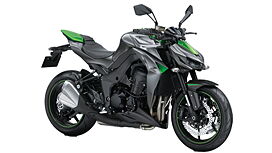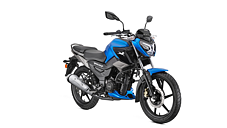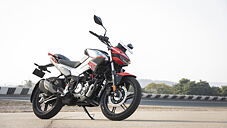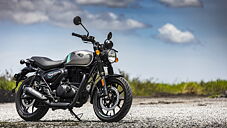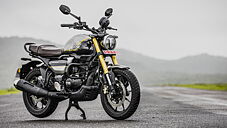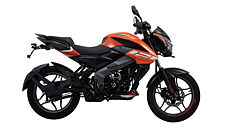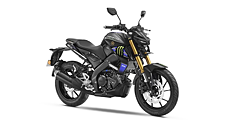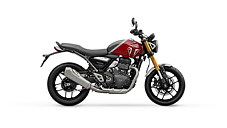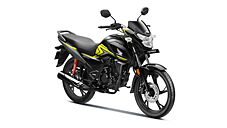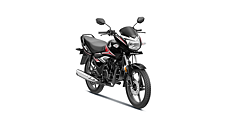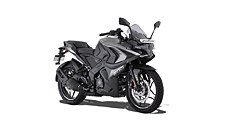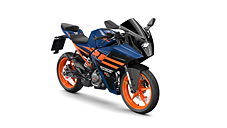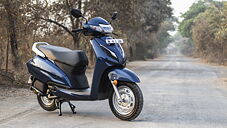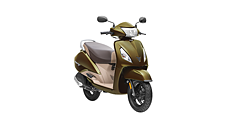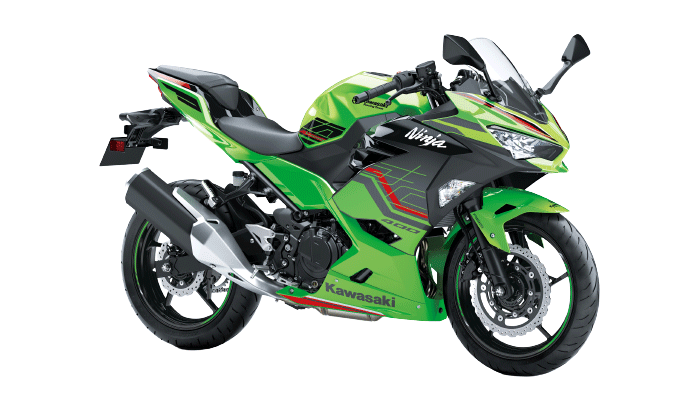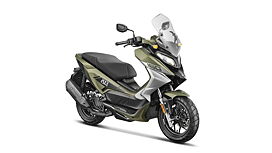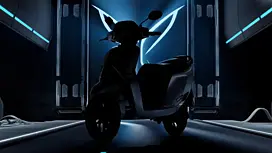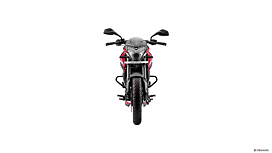Introduction

The mere mention of a four-cylinder, 1000cc motorcycle makes me go weak in the knees. The feeling of being perched on a missile with no guidance control other than your vision and your ability to steer, stop or go is frightening… but absolute power corrupts absolutely, so when I was handed the keys to the alien-looking Z1000, all I did was say a small prayer and hop on. You only live once, after all.
Looks and Styling

To paraphrase the gentleman who got out of his car just to take a photograph of the motorcycle – it looks like no other motorcycle. As such, I’d find it hard to describe to someone who hasn’t seen it before. The Ninjas are now common, so relating one to the other is relatively easy – what the Z1000 reminded us most of was the ‘Predator’ character from the movie of the same name, starring a certain Mr. Unpronounceable-last-name. This is a result of Kawasaki’s ‘Sugomi’ design philosophy. If the internet is to be believed, it means “weirdness, ghastliness, dreadfulness and awesomeness” all at the same time. Strangely yet happily, it also sums up the styling of the Z1000.

The front grabs your attention with the headlamp - four projector lenses are shrouded in a bikini fairing that looks part Japanese comic book villain, part BMW with an anger management problem. The only other feature that grabs your attention are the mirror stalks – the combination of cast aluminium and black plastic is very fetching. You can distinguish a Z1000 from a Z800 easily from the front – the Z800 has no projector units for headlamps, and the bright green addition to the fairing above the headlamp is absent as well.

The front three-quarter is the best angle to view the Z1000 from – the visual mass of the engine and tank is balanced nicely by the exhausts. The hunchback look makes it look really mean, and yet there is elegance in the way the lines of the headlamp, tank, seat and exhaust are all parallel. From the side, it looks ever so slightly front heavy, which is something we’ve come to expect from supersport motorcycles, but the stubby exhaust ends far too quickly to offer enough visual mass to the rear of the motorcycle. The pillion seat is one of my favourite design elements – no one ever realises it is a pillion seat unless they’re told it is one, or they touch it. The rear three quarter reinforces this view, but is offset beautifully by the vertically stacked two-into-four exhaust end cans that look like they have been fused to each other. This angle also shows off the green strip running down the centre of the tank, and if you look closely, you’ll see that the seat cover has a thousand little ‘Z’s on it. The rear tyre is the normal size for the litre class, but coupled with the fat exhaust end-cans and pointed tail, looks larger than life.
Instrument Cluster

The Z1000 has controls like any other motorcycle, and an instrument cluster that will be familiar to any modern Kawasaki owner, or someone who owns a Yamaha FZ16. It is all digital and displays a wealth of information in the tiny space that it occupies. Of course, the speed is the dominating component of the information, followed closely by the very interesting digital tachometer. Up to four thousand rpm, it is an LCD readout on the bottom half, which also shows the rest of the information. The top half is reserved for an LED display of the revs – from 4,000rpm right up to the redline at 11,500rpm. This makes it very easy to ride the motorcycle the way you want; for calm riding, don’t let any of the LEDs light up! There is all the information you can possibly want at the touch of the buttons on the left of the display including dual trip meters, a clock, fuel consumption – both instant and average, coolant temperature but you’ll have to cycle through the different information to get to the one thing you want to know. An interesting addition is the ‘Economical Riding’ indicator, which lights up if your riding style is fuel efficient. Kawasaki has consciously designed it such that it isn’t in the rider’s field of view most of the time, to give the feeling of an open motorcycle. The handlebar is a single rod, not clip-on, and the brake lever is adjustable. The controls are the same as any ordinary motorcycle except for the lack of a headlamp on/off switch, which contributes to the feeling of riding a familiar bike.

The seating position has been made more aggressive over the last-generation Z1000, but it still remains a very easy position to hold – city rides are easy on this motorcycle, thanks to its relatively upright seat-footpeg-handlebar positioning. If one was to compare, it is somewhere between the riding position of the Ninja 650 and ZX-10R, but inclined more towards the 650. The rear seat looks absent, but is surprisingly comfortable over short distances.
Engine and Gearbox

Kawasaki has stuck to what India loves in a superbike – an inline four-cylinder motor that is quiet at low revs, but comes alive with a howl if you gas it. It displaces 1,043cc, breathes through dual throttle bodies, 16 valves that are driven by a DOHC, and the figures stand at 139bhp and 111Nm, which is also a significant increase over the previous model, but what struck me the most was the friendly way in which it delivered the power. There are no ‘steps’ in the delivery, and riding it below 3,000rpm is something even a novice will be able to do with ease. It doesn’t grumble or stutter, the fuelling is quite perfect, and there aren’t any jerks to speak of. This is despite Kawasaki reworking the engine for better midrange and quicker throttle response.
There aren’t any electronics to speak of in the engine department – no ride modes, no traction control or adjustable settings for it; just good, clean power delivery. Kawasaki has consciously chosen not to offer electronics on the Z1000 – judging by most Indian conditions (and rider skill levels) electronics like traction control help, but on the other hand, I also am drawn to the fact that if I ride the Z1000 well, I know it is me who gets the credit, not some electronics. This could very well be the most friendly 1000cc motorcycle on sale in the country today.
The gearbox is a six-speed one, and the gearing has been shortened over the previous model except for sixth, which is taller. This is great, because at idle in first gear, the bike trundles along at an indicated 11kmph, which is perfect for weaving around in traffic without having to slip the clutch. The clutch is light and progressive, but what makes it truly usable is the short gearing – even in traffic you don’t need to slip the clutch much. The drive goes to the rear wheel via a chain.
Performance, Ride and Handling

Short gearing, 139bhp at 10,000rpm and 111Nm at 7,300rpm. Sure, the Z1000 weighs a slightly portly 221kg with the ABS, but you don’t feel this weight on the move. Open the throttle and the Z leaps forward, leaving a howl in its wake. On board, the noise begins at 4,000rpm and builds all the way to the soft rev-limiter at 11,000-odd rpm, just like the power. Harnessing the power are Showa ‘separate function big piston forks’ at the front, with adjustable preload and damping – preload on the left and damping on the right. The suspension does an admirable job of being comfortable on our bumpy roads, yet offering control at speed. Complementing the suspension are monobloc radially-mounted front brake callipers that grip 310mm dual petal rotors. ABS is present but not programmable; neither can it be turned off. At the back is a 250mm petal rotor grabbed by a single-piston calliper. They are proper superbike hardware, and respond at the slightest touch. Despite the awesome power, they are very progressive, and the ABS also reduces rear lift under heavy braking. The chassis is made of aluminium, and Kawasaki claims it is similar in concept to the ZX-10R’s. Handling is neutral, and the lowered handlebar helps with high-speed control.

The tank has been made larger compared to the outgoing model as well, but tank range remains around the standard for litre-class motorcycles. You can stretch it further by paying careful attention to the Economical Riding indicator in the cluster.
Verdict

No traction control means you have to respect the throttle at all times (and maybe park it during a Mumbai monsoon,) but the Z1000 is so linear in whatever it does, you quickly get used to it and start having fun. This doesn’t mean it is a softie; the speed, handling and noise are all just a few thousand revs up the road. At Rs 12.9 lakh, ex-showroom, Pune, you will get looks that will stop people in their tracks, and a surprisingly useable motorcycle but without the bragging rights – or safety net – of electronics besides the ABS.
Gallery
1/42
Double Tap to Zoom











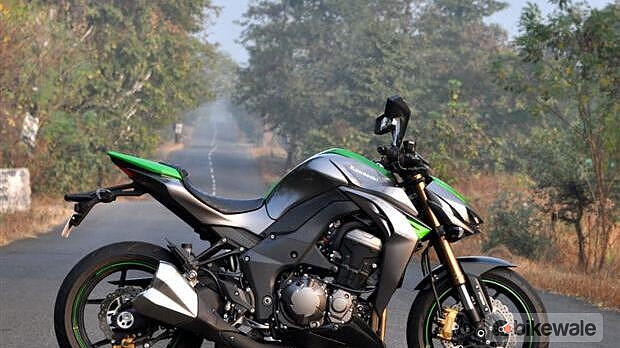







![[object Object] ThumbNail Images [object Object] ThumbNail Images](https://imgd.aeplcdn.com/642x361/bikewaleimg/ec/1070/img/l/Kawasaki-Z1000-6174.jpg?v=201711021421&q=80)
![[object Object] ThumbNail Images [object Object] ThumbNail Images](https://imgd.aeplcdn.com/642x361/bikewaleimg/ec/1070/img/l/Kawasaki-Z1000-6175.jpg?v=201711021421&q=80)
![[object Object] ThumbNail Images [object Object] ThumbNail Images](https://imgd.aeplcdn.com/642x361/bikewaleimg/ec/1070/img/l/Kawasaki-Z1000-6176.jpg?v=201711021421&q=80)
![[object Object] ThumbNail Images [object Object] ThumbNail Images](https://imgd.aeplcdn.com/642x361/bikewaleimg/ec/1070/img/l/Kawasaki-Z1000-6177.jpg?v=201711021421&q=80)
![[object Object] ThumbNail Images [object Object] ThumbNail Images](https://imgd.aeplcdn.com/642x361/bikewaleimg/ec/1070/img/l/Kawasaki-Z1000-6178.jpg?v=201711021421&q=80)
